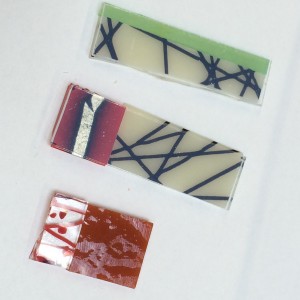Oregon still wrestles with art glass question
The State of Oregon is nearing a decision on final rules for the production of colored art glass. The state’s major producers came under closer scrutiny after regulators discovered higher-than-acceptable emissions of toxic metals from their operations.
Art glass producers under regulatory microscope
The state’s largest producers of colored glass and colored glass supplies have installed filters to capture chromium, arsenic, cadmium and other toxic heavy metals. Smaller producers are asking the State of Oregon to exempt them from the filtration requirements. They’re seeking to apply regulations only to producers that generate more than 10 tons of colored glass per year.
The State of Oregon Department of Environmental Quality has been monitoring the companies’ reduced emissions since it put temporary restrictions in place earlier this year. According to the state, its testing revealed that even at the reduced production levels, processed chromium still poses a major problem.
Glass producers melt trivalent chromium in a furnace as part of the colored glass making process. By itself, trivalent chromium does not pose a significant health hazard. After smelting, however, chromium that isn’t trapped the glass emerges as hexavalent chromium, a known carcinogen. Even worse, according to the state, the filtration systems currently in use by the glass manufacturers capture only two-thirds of the carcinogenic chromium emissions. The rest is released into the surrounding air.
The DEQ has temporarily prohibited the glassmakers from using any chromium in their glassmaking processes. Chromium is a standard additive in making green glass. It can also be used to make black glass. Chromium is also mixed with other metals, including tin oxide and arsenic, to make emerald green.
The problem isn’t a small one, and it isn’t limited strictly to artistic glass. Green glass is commonly used in food containers. While ordinary soda lime glass has a greenish tint, that coloration comes from iron oxide. Darker green containers – such as those used for storing wine and oil – would also be affected by the ban.
Arsenic, when combined with other metal oxides, is used to create imitation porcelain. Cadmium, which is toxic by itself, is used to create intense yellow glass and various glazes. When it is combined with other additives, like sulphur and selenium, it produces deep colors that range from orange to red.
The question of emissions in Oregon has spurred a larger debate, and has prompted the US EPA to examine glass factory emissions more closely. Glassprimer™ glass paint offers an option for creating colored glass. Glassprimer™ glass paint is a specially engineered glass coating that is applied directly to the glass surface. It can be tinted to match the paint palette of any major paint manufacturer and makes a permanent bond to the glass surface. Once cured, it will not chip, fade or peel, and performs well, even in harsh environments.
For more information about Glassprimer™ glass paint, please visit the rest of our site. If you’d like to purchase Glassprimer™ glass paint, please visit our online store .
Photo Credit: Nancy McClure, via FreeImages.com

